Exoskeletons in medicine
The first comment to my previous post about robotics in medicine was a request (or a question) to write about used exoskeletons.
What is exoskeleton? This is the “external skeleton”, which due to the framework increases the force of a person. He must repeat the biomechanics, which will allow him to proportionally increase the force during movements. Among the applications of exoskeleton are military, agriculture and medicine.
About such developments in the medical field - I ask for habrakat.
')

First, a little history. Like many inventions, the exoskeleton came to us from the military sphere. The first sample was developed by General Electric and the US Army in the 1960s. It looks awesome, doesn't it? The effort that you apply when lifting four and a half kilograms, he transformed into 110 kg.
But he had two minuses: this is a weight of 680 kg and the impossibility to verify the movement with the movement of a person. That is, he did not receive feedback after the start of movement from a person.

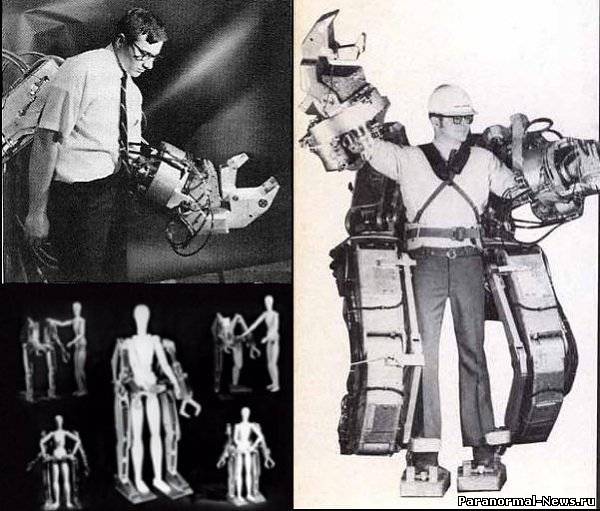
Then repeatedly developed exoskeletons for the army. After all, they can greatly increase the payload of one soldier so that he could take with him a larger machine gun and equipment for the regiment.


And who else needs to increase strength? For those who have too little of it. Those who are paralyzed and cannot walk on their own. Such projects can help them.
Who, if not Japanese, come up with exoskeletons to care for the elderly? Only in this case is it a concern for the young - for nurses who have to lift and shift patients. The purpose of such an exoskeleton, like the Ribo robot, is in shifting.
Power Assist Suit in Japan was introduced in the 1990s.
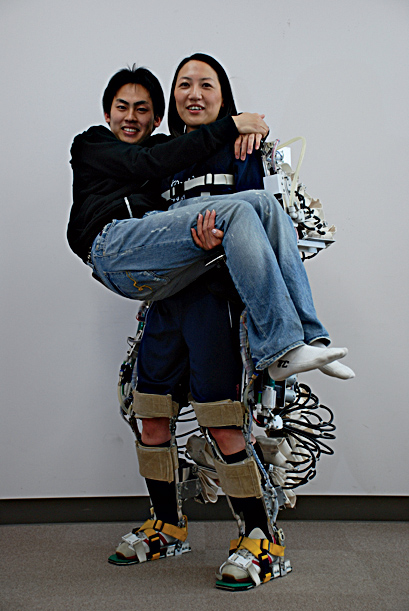

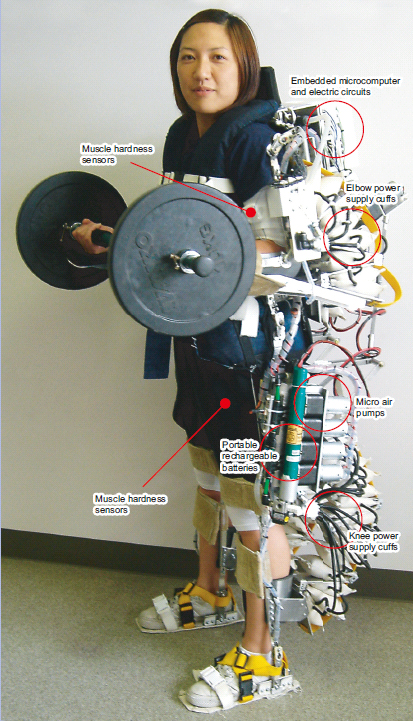
Later in Japan, HAL was introduced - a cyber suit-exosclet. Initially, it is designed specifically for lifting and moving patients. In addition, he could help older people and people with disabilities to move independently.


The US Food and Drug Administration only in the summer of this year registered the first exoskeleton for the rehabilitation of patients with spinal injuries.
ReWalk from Israeli developers has a remote control in the form of a wristwatch. That's just better to use crutches - for additional stability. Everything is better than sitting in a chair, I think.

A couple of years ago, this costume helped a paralyzed woman overcome a marathon.
ExoAtlet is a Russian development. It is intended “for verticalization and walking of a patient with impaired locomotor functions of the lower extremities”.
It is still far from industrial scale of production, but the prototype, judging by the information in the network, is already operational. If you have something to add on this topic - please write in the comments or in private messages.
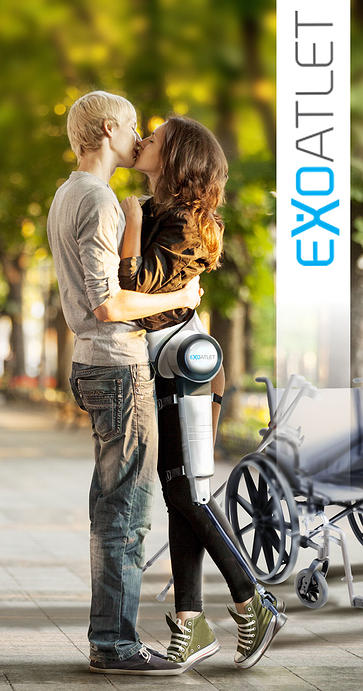

A flexible exoskeleton that repeats the biomechanics of a person’s feet can be a promising direction in this area. After all, the glands around the legs are clearly inferior to healthy parts of the body in terms of maneuverability.
At the same time, several universities and the developer of BioScience wearable sensors are developing this “pad” with artificial muscles, sensors and software. Both artificial tendons and artificial muscles stretched from the outer part of the leg are visible here.
Most of the complexity lies precisely in flexibility: after all, therefore, control methods, that is, sensors, must be distinguished by particular accuracy.
Such equipment will help not only people with impaired mobility of the foot and ankle (so far only the device works there), but can later be used in other areas - on the hands, for example.
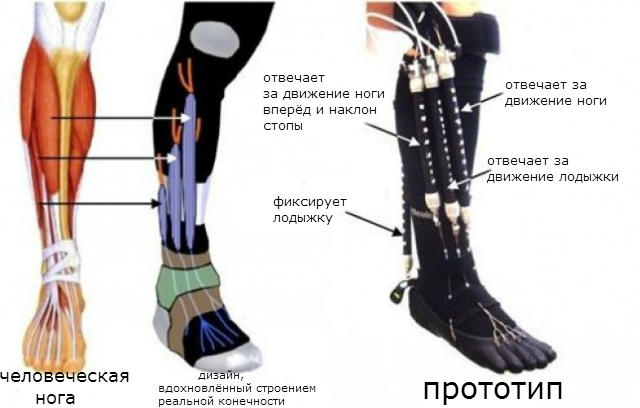
This video clearly shows the artificial muscles, as well as the sensors used in this soft exoskeleton.
3D medical printers can be very helpful. How they helped Amanda Boxtel, paralyzed from the belt and below. 3D Systems specialists scanned her body, and together with EksoBionics printed out this exoskeleton.

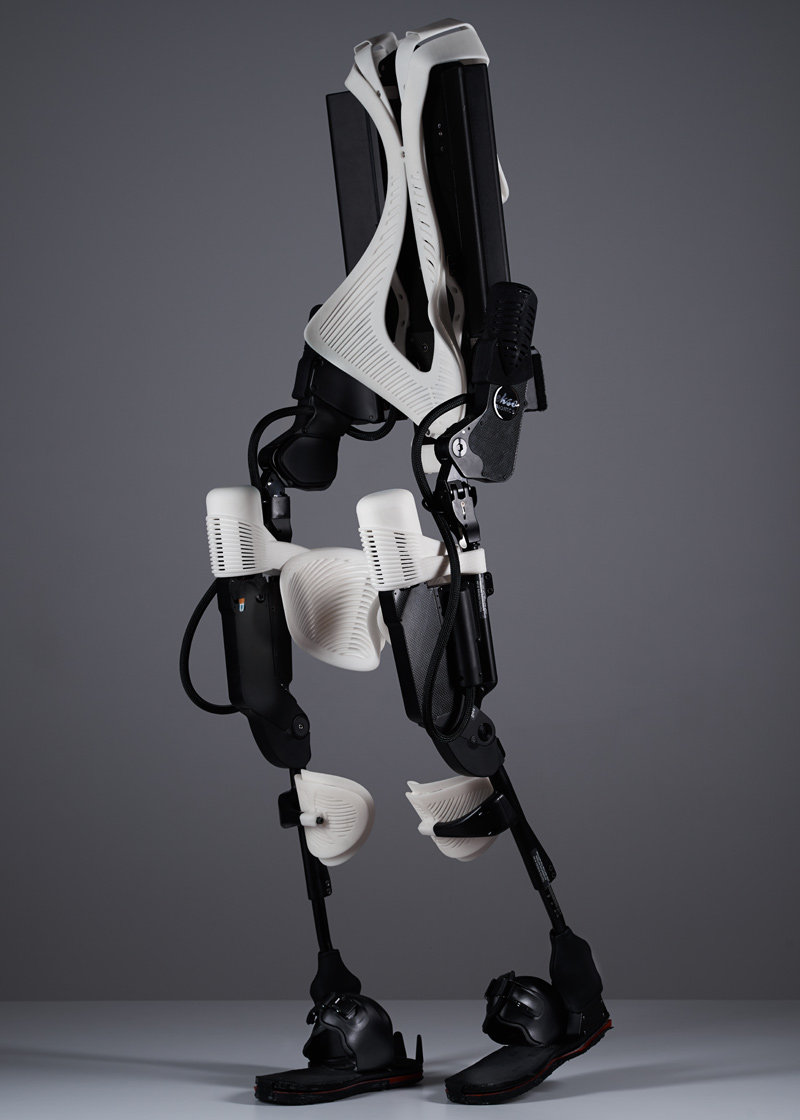
I think it's amazingly awesome - after years of inability to walk again, stand on your feet.
Giuliano Pinto at the opening of the World Cup 2014 kicked the ball. It seems to be nothing interesting - kicked and kicked. But he is completely paralyzed, this 29 year old boy. He controlled the exoskeleton with his own brain, and not with the help of remote control or his own legs, in which at least some possibility of movement remained.
The creator of this exoskeleton is Miguel Nicholasis from Brazil. The government has allocated $ 14 million for this development, which is not such a high amount when compared with the amount spent on such projects in the United States.
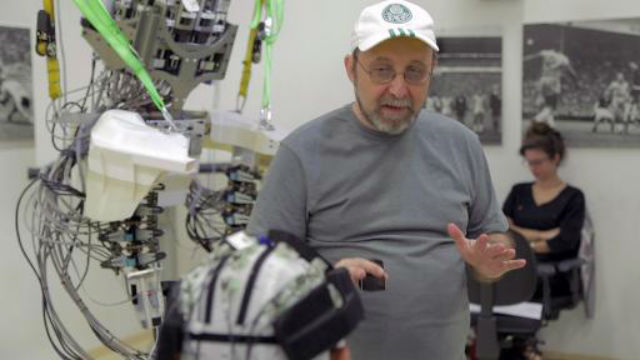
Will neuromanagement become future in prosthetics and exoskeletons? It seems to me obvious that work in this direction should be carried out with terrible force. But for this it is necessary to attract investment.
What is exoskeleton? This is the “external skeleton”, which due to the framework increases the force of a person. He must repeat the biomechanics, which will allow him to proportionally increase the force during movements. Among the applications of exoskeleton are military, agriculture and medicine.
About such developments in the medical field - I ask for habrakat.
')

The first exoskeleton
First, a little history. Like many inventions, the exoskeleton came to us from the military sphere. The first sample was developed by General Electric and the US Army in the 1960s. It looks awesome, doesn't it? The effort that you apply when lifting four and a half kilograms, he transformed into 110 kg.
But he had two minuses: this is a weight of 680 kg and the impossibility to verify the movement with the movement of a person. That is, he did not receive feedback after the start of movement from a person.


Then repeatedly developed exoskeletons for the army. After all, they can greatly increase the payload of one soldier so that he could take with him a larger machine gun and equipment for the regiment.


And who else needs to increase strength? For those who have too little of it. Those who are paralyzed and cannot walk on their own. Such projects can help them.
Exoskeleton for the nurse
Who, if not Japanese, come up with exoskeletons to care for the elderly? Only in this case is it a concern for the young - for nurses who have to lift and shift patients. The purpose of such an exoskeleton, like the Ribo robot, is in shifting.
Power Assist Suit in Japan was introduced in the 1990s.



Later in Japan, HAL was introduced - a cyber suit-exosclet. Initially, it is designed specifically for lifting and moving patients. In addition, he could help older people and people with disabilities to move independently.


Rewalk
The US Food and Drug Administration only in the summer of this year registered the first exoskeleton for the rehabilitation of patients with spinal injuries.
ReWalk from Israeli developers has a remote control in the form of a wristwatch. That's just better to use crutches - for additional stability. Everything is better than sitting in a chair, I think.

A couple of years ago, this costume helped a paralyzed woman overcome a marathon.
ExoAtlet
ExoAtlet is a Russian development. It is intended “for verticalization and walking of a patient with impaired locomotor functions of the lower extremities”.
It is still far from industrial scale of production, but the prototype, judging by the information in the network, is already operational. If you have something to add on this topic - please write in the comments or in private messages.


Soft exoskeletons
A flexible exoskeleton that repeats the biomechanics of a person’s feet can be a promising direction in this area. After all, the glands around the legs are clearly inferior to healthy parts of the body in terms of maneuverability.
At the same time, several universities and the developer of BioScience wearable sensors are developing this “pad” with artificial muscles, sensors and software. Both artificial tendons and artificial muscles stretched from the outer part of the leg are visible here.
Most of the complexity lies precisely in flexibility: after all, therefore, control methods, that is, sensors, must be distinguished by particular accuracy.
Such equipment will help not only people with impaired mobility of the foot and ankle (so far only the device works there), but can later be used in other areas - on the hands, for example.

This video clearly shows the artificial muscles, as well as the sensors used in this soft exoskeleton.
3D printing
3D medical printers can be very helpful. How they helped Amanda Boxtel, paralyzed from the belt and below. 3D Systems specialists scanned her body, and together with EksoBionics printed out this exoskeleton.


I think it's amazingly awesome - after years of inability to walk again, stand on your feet.
Robocosuit and football
Giuliano Pinto at the opening of the World Cup 2014 kicked the ball. It seems to be nothing interesting - kicked and kicked. But he is completely paralyzed, this 29 year old boy. He controlled the exoskeleton with his own brain, and not with the help of remote control or his own legs, in which at least some possibility of movement remained.
The creator of this exoskeleton is Miguel Nicholasis from Brazil. The government has allocated $ 14 million for this development, which is not such a high amount when compared with the amount spent on such projects in the United States.

Will neuromanagement become future in prosthetics and exoskeletons? It seems to me obvious that work in this direction should be carried out with terrible force. But for this it is necessary to attract investment.
Source: https://habr.com/ru/post/239639/
All Articles